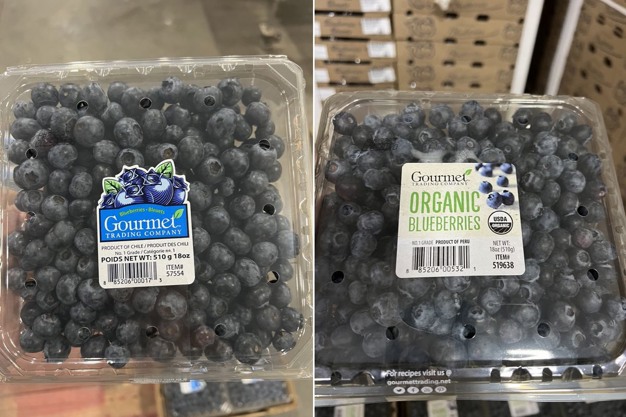“As the South American blueberry season unfolds, an intriguing set of factors are driving prices to historic highs in the global market,” says Luciano Fiszman with Gourmet Trading Company. “As a result of El Niño, Peru’s volumes are significantly lower this season, causing ripple effects throughout the industry.” Fiszman provides an update on how the different blueberry growing countries in South America are managing the challenges and how importers and distributors are navigating these conditions.
Peru
Starting with Peru, the country is the most significant blueberry grower globally. However, year to date production volumes are down 50 percent due to the immense impact of El Niño. “The weather pattern, which includes warmer temperatures than normal in the fall and winter, has led to a notably poor bloom in some varieties and regions.” It has caused a shortage in the Peruvian blueberry crop, resulting in rising prices and uncertainty in the marketplace. Nevertheless, Peru remains the dominant player this time of year.
Argentina
Peru’s shortage is offering opportunities for Argentina. “Favorable weather conditions, lower growing and harvesting costs, decent quality, and most importantly better pricing, have led to an increase in export shipments,” said Fiszman. “Argentina is helping alleviate the shortage caused by Peru and the country is poised for a promising season.”
Mexico
While Mexico’s primary window is the spring timeframe, the country produces blueberries almost year-round in different regions. “Right now, Mexico’s share in blueberry supplies is small, but steady and the country provides a consistent supply to the market.” Mexico’s proximity to the US market makes it the most natural supplier. “Growers are tirelessly chasing the spot market and the fight for blue fruit can be upsetting,” Fiszman said.
Chile
Chile has a well-established blueberry industry and diverse growing regions. The country was the most dominant off-season region for many years, until Peru took over in the past few years. Chile is expected to play an important role in bridging the supply gap that is caused by the Peruvian situation. While the country is in the market later in the season, it provides the biggest chance for reasonable volumes this offshore campaign. “Gourmet Trading is known for its solid relationships with growers, and we are at the forefront of bringing in volume from Chile this season,” commented Fiszman.

Market uncertainty and pricing adjustments
While South American blueberry growers, importers, and distributors are diligently working to meet demand, unpredictability adds a layer of uncertainty. “It isn’t clear enough when the market will receive sufficient volume to satisfy the hunger for blueberries and industry players are left to grapple with unpredictability of supply. This in turn affects pricing dynamics,” shared Fiszman. He expects pricing will adjust as soon as the market begins to receive increased volumes from Peru and Chile. “As more fruit becomes available, I believe pricing will find a more balanced equilibrium. The market will gradually stabilize as production levels even out, and the immediate shortage is addressed. However, the big question is when this will happen.”
Strategy modification
How has this changed Gourmet Trading Company’s strategy for the offshore blueberry season? “We have taken a proactive approach to address the challenges,” said Fiszman. “Fruit from Peru and Chile is received in bulk and packed at destination. This ensures a consistent supply and has also helped packing the correct formats right before loading orders for customers. Additionally, the integrity of the product is protected by sorting the pieces of fruit that shouldn’t be in a clamshell.”
“What also helps is the close partnerships we have with Chilean growers. It has given us a unique advantage. We are one of few companies that are already offering Chilean blueberries and these solid relationships will support us in continuing to deliver high-quality blueberries for the next five months, along with fruit from Peru and Mexico.”
In conclusion, the South American blueberry season is faced with challenges. However, the response from countries like Argentina, Mexico, and Chile is helping maintain a sense of stability. “As the offshore season progresses, the industry will continue to find innovative ways to meet the ever-growing demand for fresh blueberries,” finished Fiszman.
 For more information:
For more information:
Luciano Fiszman
Gourmet Trading Co.
Tel: +1 310 216 7575 ext 1888
[email protected]
www.gourmettrading.net










